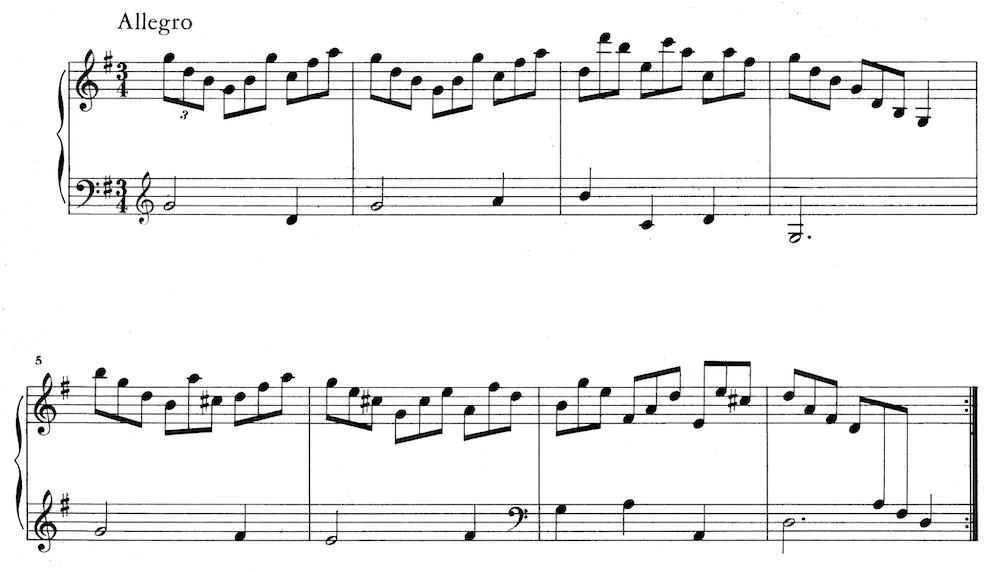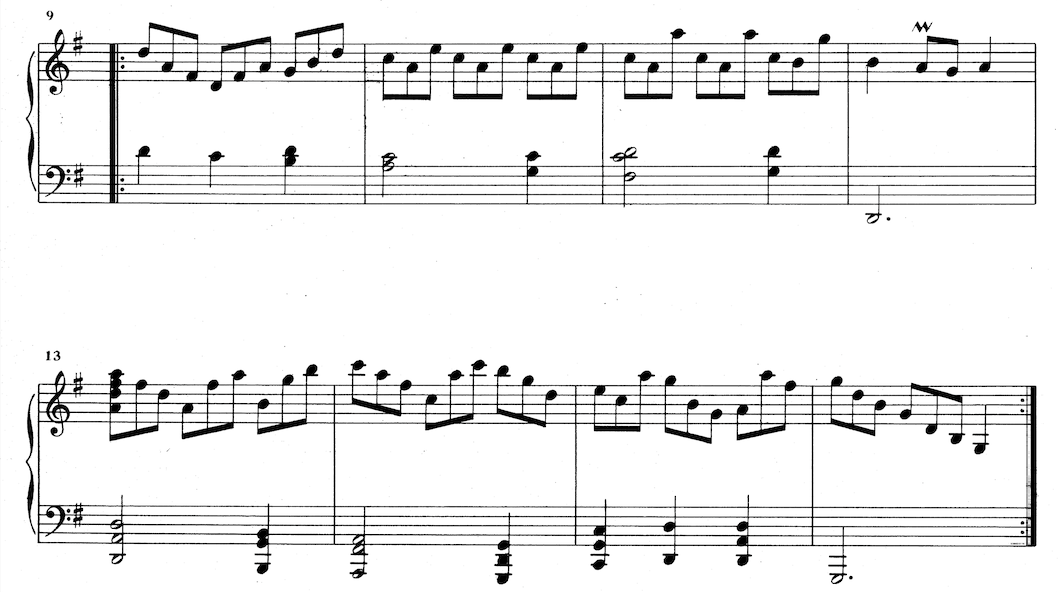- Home >
- Foundations in Piano Technique >
- Scales and Arpeggios >
- Two-Octave Arpeggios (6.2)
Scales and Arpeggios
Two-Octave Arpeggios (6.2)
- Begin by practising throws in the right hand, between the third finger and the thumb on white keys only. Place the 3rd finger on the G above middle C. Use a throw to move upward to the C above middle C.
- The Throw requires no preparation--it is a sudden, unprepared, lateral movement.
- When playing the 3rd finger, allow the thumb to hang freely, off of the keys, and maintain hand alignment in front of the forearm.
- The 3rd finger plays out toward the edge of the key.
- The Throw is a free, easy movement that uses the larger muscles of the arm.
- Note what part of your body executes the throw by observing very large throws—ones that are larger than we ever need to play arpeggios.
Left-Hand Inversion Instructions:
- To practise throws in the left hand, between the third finger and the thumb on white keys only, place the 3rd finger on the F below middle C– and throw downward to the C below middle C.
- Review all other instructions for the right hand, above.
- Experiment with throws that are smaller than what is required to play arpeggios. For example, in C Major, instead of playing C-E-G-C, start with C-E-G-A (so that the throw is only a second) and then C-E-G-B (so that the throw is a third) before completing the full arpeggio C-E-G-C, where the last interval is a fourth.
- Similarly, practise smaller throws descending in the right hand. Thus, play the descending arpeggio C-G-E-C and land on B (a second below the C). Then land on A (a third below the C) and finally on G (the actual interval played in this arpeggio, a fourth down from C).
- Note: this is a compressed explanation of two-octave arpeggios. For a fuller, detailed experience with studying virtuoso arpeggios, consult entradapiano.com.

Scarlatti: Sonata in G, K. 431
Isolate small groups of notes to experiment with three-dimensional arpeggio shaping in a variety of combinations.

Scarlatti: Sonata in G, K. 431
Isolate small groups of notes to experiment with three-dimensional arpeggio shaping in a variety of combinations.
Purchase options
This content is available as a separate, once-off purchase from our store via the following products:
